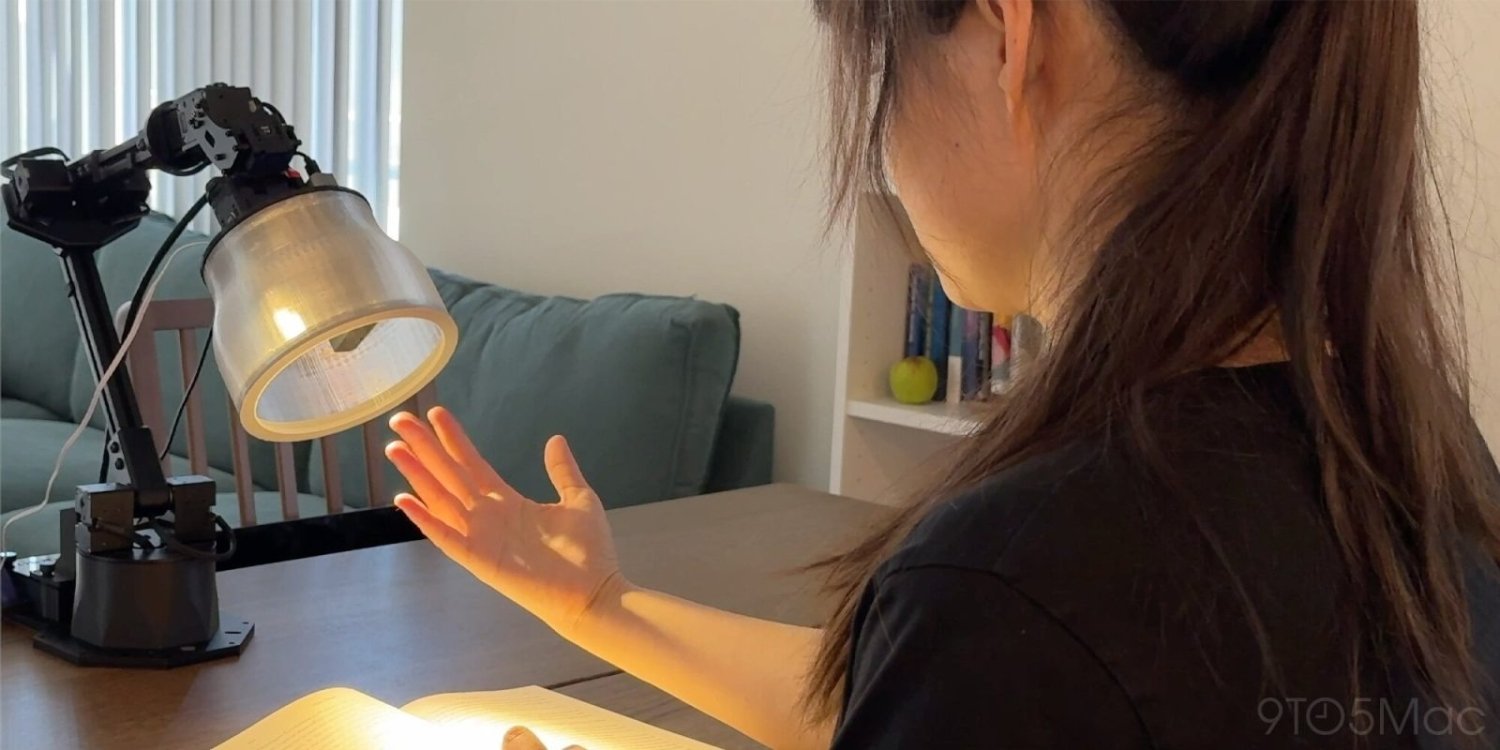
Apple has teased the future with a team of robotics researchers at the company designing and prototyping a robot with lifelike movements, that looks like a lamp that you’ll have on your desk.
In a new video published last month on the Apple Machine Learning Research website, we get a look at something that resembles Pixar mascot Luxo Jr. The video shows the robot interacting with a person in a lifelike way, with the user asking the robot what the weather will be like today, and the robot looks out the window before responding with the forecast… a nice touch.
The user says that they’ll be going for a hike that day, but the robot looks sad when it finds out it’s not invited on the journey. In another situation, the robot responds to the user’s hand gestures by moving to provide the desired lighting for iPhone photography. In another test, the robot pushes a mug on the desk towards the person, acting as a reminder to drink more water.
Apple’s new robot prototype watches the person building a 3D printer, projecting tutorial videos on the wall to help the user, while in another test the robot plays music and even dances to it, acting as a social friend bopping to music with you.
We know that Apple is working on something new, as Bloomberg’s Mark Gurman reported last year that Apple was working on a tabletop robot that features an ‘iPad-like display’ with an attached ‘robotic limb’. We should expect Apple to unleash its new robot — maybe iRobot, but not the Will Smith movie obviously — in 2026 or 2027. The company needs a new big hit after its failed Vision Pro, and pulling out of the EV market.
In a new post on the Apple Machine Learning Research website by researchers AuthorsYuhan Hu, Peide Huang, Mouli Sivapurapu, Jian Zhang, they explained: “Nonverbal behaviors such as posture, gestures, and gaze are essential for conveying internal states, both consciously and unconsciously, in human interaction. For robots to interact more naturally with humans, robot movement design should likewise integrate expressive qualities-such as intention, attention, and emotions-alongside traditional functional considerations like task fulfillment, spatial constraints, and time efficiency. In this paper, we present the design and prototyping of a lamp-like robot that explores the interplay between functional and expressive objectives in movement design”.
“Using a research-through-design methodology, we document the hardware design process, define expressive movement primitives, and outline a set of interaction scenario storyboards. We propose a framework that incorporates both functional and expressive utilities during movement generation, and implement the robot behavior sequences in different function- and social- oriented tasks. Through a user study comparing expression-driven versus function-driven movements across six task scenarios, our findings indicate that expression-driven movements significantly enhance user engagement and perceived robot qualities. This effect is especially pronounced in social-oriented tasks”.
